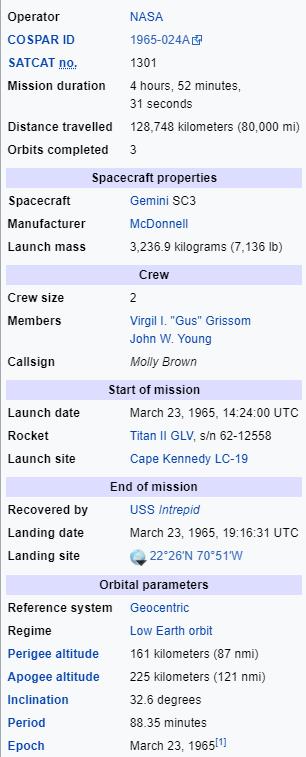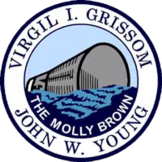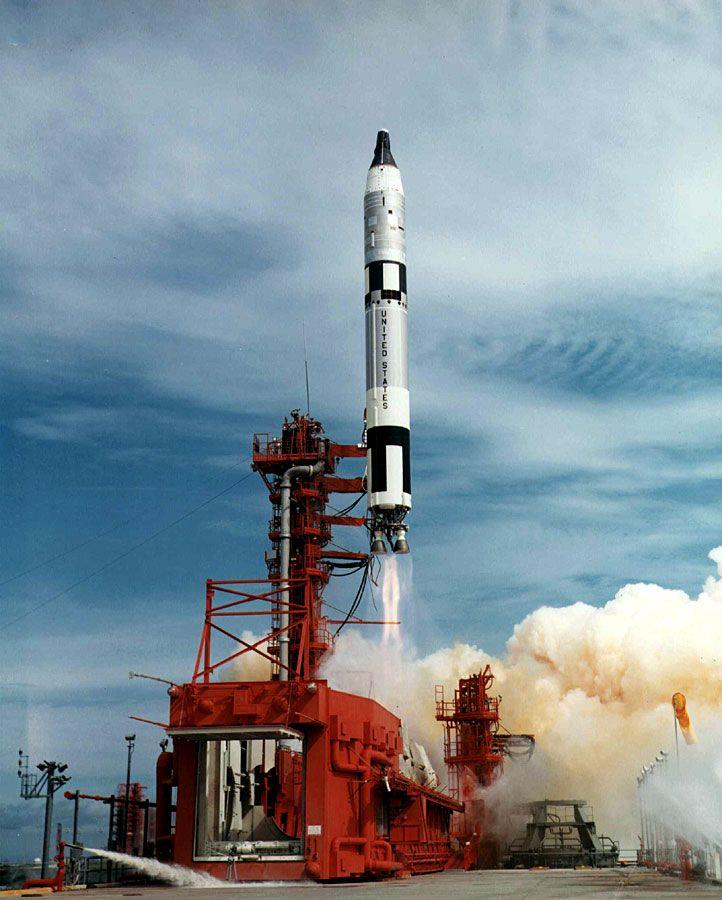Gemini 3
Astronauts:
Command Pilot :
Virgil I. "Gus" Grissom
(Second Flight)
Pilot
John W. Young
(First Space Flight)
Backup Crew:
Command Pilot: Walter M. Schirra
Pilot: Thomas P. Stafford
Support Crew:
Command Pilot: Alan B. Shepard
Pilot: Thomas P. Stafford
Gemini 3 was the first manned mission in NASA's Gemini Programme, the second American manned space program. On March 23, 1965, the spacecraft, nicknamed Molly Brown, performed the seventh manned US spaceflight, and the 17th manned spaceflight overall (including X-15 flights over 100 kilometers). It was also the final manned flight controlled from Cape Canaveral, Florida before mission control functions were shifted to the Manned Spacecraft Centre in Houston, Texas.
Study
Research
Main Index
Space Cosmology
Science Research
*
About
Science Research
Science Theories
Desk
Site Map
BookShelf
Copyright © by Nigel G Wilcox · All Rights reserved · E-Mail: ngwilcox100@gmail.com
Designed by Nigel G Wilcox
Powered By AM3L1A
Pages within this section: Gemini Manned Space Flights
Gemini 3
Pages within this section:
1
M
8
SM
Sub-Menu
menu
2
3
4
5
6
7
8
9
Gemini Manned Missions

The crewmen made their first orbit change an hour and a half into the flight. The burn lasted 75 seconds and moved them from a 122-by-175-kilometer (66-by-94-nautical-mile) orbit to a nearly circular one with a drop in speed of 15 m/s (49 ft/s). The second burn, changing the orbital inclination by 0.02 degrees, was made 45 minutes later. The last burn, during the third orbit, lowered the perigee to 72 km (39 nmi). This was made so, in case the retrorockets had failed, the spacecraft would still have reentered the atmosphere. The experience of reentry initially matched expectations, with even the color and pattern of the plasma sheath that enveloped the capsule matching those produced for ground simulations. However, it soon became clear that Molly Brown was off course and would land 69 km (37 nmi) off target. Though wind tunnel studies had suggested the spacecraft could maneuver to make up for the discrepancy, Gemini's real lift was far less than predicted, and Grissom was unable to significantly adjust course. Molly Brown ultimately landed 84 km (45 nmi) short of its intended splashdown point.
This was not the only unexpected event of the short descent: After its parachutes were deployed, the spacecraft shifted from a vertical to horizontal attitude. The change was so sudden that Grissom cracked his faceplate (made of acrylic) on the control panel in front of him. Later Gemini spacesuits and all Apollo and Space Shuttle (both launch-entry and EVA suits) used polycarbonate plastic.
A U.S. Coast Guard HH-52A over the Gemini 3 capsule.
Upon landing, the astronauts decided to stay in the capsule, not wanting to open the hatch before the arrival of the recovery ship. The crew spent an uncomfortable half-hour in a spacecraft not designed to be a boat. Due to unexpected smoke from the thrusters, the astronauts decided to deviate from the post landing checklist and to keep their helmets on with the face plates closed for some time after splashdown.














